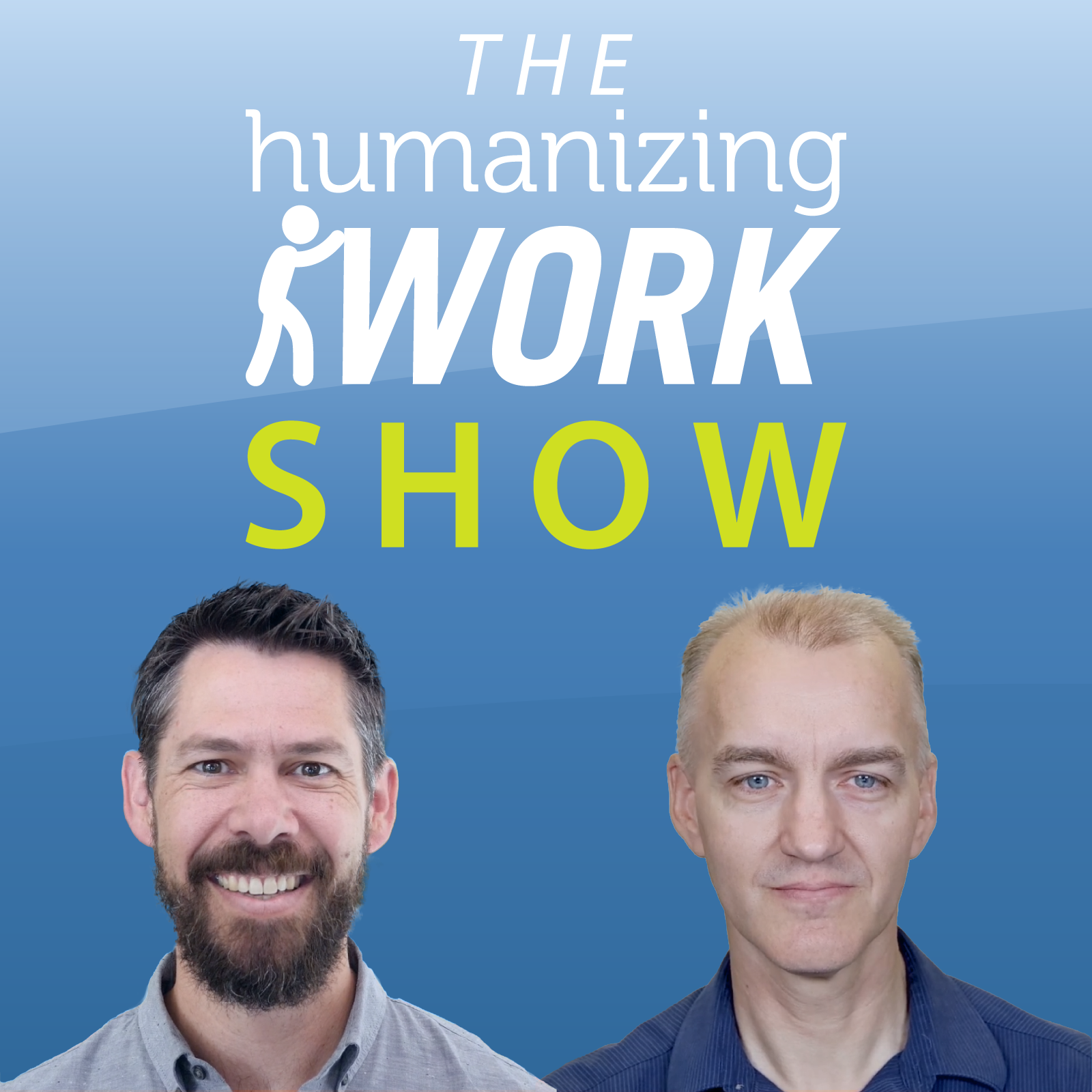Richard Lawrence
Welcome to the Humanizing Work Mailbag, where we answer questions from the Humanizing Work Community!
Peter Green
If you’ve got a question you'd like us to give our take on, email us at
[email protected], and we'll see if we've got a good answer for you.
Before we jump into today’s episode, though, just a quick reminder to rate and review the HW Show in your podcast app, or if you’re watching on YouTube, please subscribe, like, and share today’s episode if you find it valuable to you. Your help spreading the word is super meaningful to us!
Peter
And if you want to get access to more of the content we produce, not just the show, you can sign up for our weekly newsletter at humanizingwork.com/hwnews, where we explore one key idea every week that helps you make your work a bit easier and a bit more purposeful.
Richard
Today’s question is, “What do I focus on as a new ScrumMaster?” This is a common one. Maybe you just finished a CSM class. You want to be useful to your team. But the job is kind of vague and nebulous.
It’s tempting to focus on “making my team do Scrum right.” But that’s going to get you busy doing potentially a lot of the wrong things while alienating your team, who don’t really care about doing Scrum right. Doing Scrum right isn’t really the goal. It’s a tool. Scrum is a useful framework when it’s used to help your team do the right things more effectively over time. Instead, when you think about “What do I focus on as a ScrumMaster?” use this 3 part “mantra” for what your job is:
Make it easy, make it visible, make it purposeful.
Peter
First, make it easy — Great ScrumMasters focus on facilitation in service of larger outcomes and in service of the team. There are components of Scrum that should make much of the team’s work easier to do well. But the purpose of Scrum is to help the team. Don’t just be the “Scrum Police,” referencing the books or the Scrum Guide. Help the team see why the parts of Scrum exist and how doing them well might help the team members. Make it easy to use Scrum well; don’t impose it because you’re the ScrumMaster.
Richard
Make it visible — Great ScrumMasters visualize information both to help the team make better decisions and to help resolve and prevent impediments. Sometimes, this is just helping the team use tools they already have. Other times, it’s creating a new visual for something that’s currently below the surface for the team or the organization.
Peter
And finally, make it purposeful — A team exists to achieve a shared purpose. Great ScrumMasters keep the purpose front and center at various levels of detail. Don’t assume the WHY is obvious, whether for the product, the process, a specific meeting, or anything else. Build alignment around that shared purpose all the time.
Richard
Now, the practical ways you “make it easy, make it visible, and make it purposeful” change over the life of a team. A new Agile team needs something different from their ScrumMaster than a mature team does.
As you’re helping your team become more effective, recognize that Agile teams tend to go through sort of stages where they focus on improving different things. Of course, context matters (not all teams are the same), but we do see some common patterns after a couple decades of doing this.
Peter
For example, teams coming from a culture of big plans, long releases, and dependencies and handoffs between different functions, often notice that the first stage of improvement is often just, “let’s figure out how to deliver something real in a sprint.” At that point, your role is to help make that easy, to make visible the state of the work, to keep the team focused on that purpose of moving the shared commitment forward.
Then, once a team gets reliable at completing a shared commitment in a sprint, the focus changes to the value of what they’re delivering. Now, you’re helping them with things like backlog refinement, helping make the WHY of the work more visible with the Product Owner, etc.
Once those habits are in place, improvement might shift to making the work more sustainable. This is where things like engineering practices often come in.
Richard
At each of those stages of team development, as the ScrumMaster, you’re asking yourself, “How can I make it easier for the team right now?” Skilled facilitation, using Scrum well, supporting process improvement, removing impediments. “What do I need to make visible, right now?” The state of the work in a sprint, the readiness of items on the backlog, the larger value each increment of work connects back to, the internal quality of the product. And, “What purpose do I need to keep the team focused on right now?” The purpose in the big picture, in each meeting, in each backlog item, in our growing engineering discipline.
Peter
Scrum has two simultaneous cycles going on—a team is building better and better products and they’re simultaneously building a better and better team and work system. Great ScrumMasters simultaneously make it easy, visible, and purposeful in both of those areas–the business outcomes and the team’s effectiveness.
As David Marquet says, “Now, go forth, and BE GREAT!”
Richard
Please like and share this episode if you found it useful, and keep the questions coming! We love digging into tough topics, so send them our way. We also send out a weekly newsletter with one key idea from the week before. This week’s newsletter, for example, explores the idea of team habits and strategies that we started talking about here. You can subscribe by going to humanizingwork.com/hwnews.
Finally, our Certified Scrum Master course helps new and experienced ScrumMasters go much deeper into how to make it easy, make it visible, and make it purposeful. It’s not a course about the basic mechanics of Scrum. It’s a course about becoming the kind of great ScrumMaster we’re talking about here. If that’s interesting to you, you can find all of our upcoming courses in the sidebar at humanizingwork.com.




